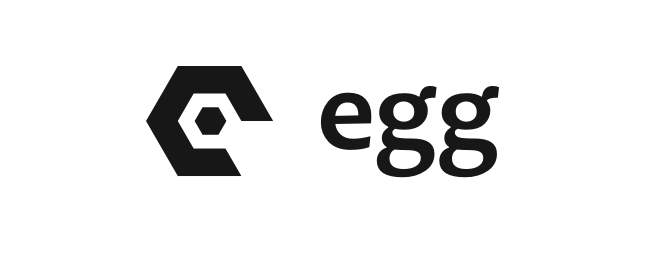Axios
简介及安装
简介
axios是基于promise用于浏览器和node.js的http客户端
特点:
- 能够拦截请求
- 支持浏览器和node服务器
- 支持Promise
安装
运行命令
$ npm install axios
也可以通过cdn引入
<script src="https://unpkg.com/axios/dist/axios.min.js"></script>
使用示例
GET
axios.get('http://127.0.0.1:7001/news').then(response => {
console.log(response);
}).catch(error => {
console.log(error);
})
如果需要发送参数,有两种方式,第一种就是上面的示例url后添加参数,第二种是将要发送的数据作为对象放到get方法的参数中
axios.get('http://127.0.0.1:7001/news', {
params: {
id: 123
}
}).then(response => {
console.log(response);
}).catch(error => {
console.log(error);
})
POST
axios.post('http://127.0.0.1:7001/add', {
name: 'zhangsan',
password: '123456'
}).then(response => {
console.log(response);
}).catch(error => {
console.log(error);
})

axios的API
axios(config)
axios({
method: 'POST',
url: 'http://127.0.0.1:7001/add',
data: {
name: 'zhangsan',
password: '123456'
}
});
// 获取远程图片
axios({
method:'get',
url:'http://127.0.0.1:7001/img',
responseType:'stream'
})
.then(function(response) {
response.data.pipe(fs.createWriteStream('bg.jpg'))
});
axios(url[, config])
不添加config,默认GET请求
别名
- axios.request(url);
- axios.get(url[,config]);
- axios.delete(url[,config]);
- axios.head(url[,config]);
- axios.options(url[,config]);
- axios.post(url[,data[,config]]);
- axios.put(url[,data[,config]]);
- axios.patch(url[,data[,config]]);
请求和响应
请求配置
{
// `url` 是用于请求的服务器 URL
url: '/user',
// `method` 是创建请求时使用的方法
method: 'get', // default
// `baseURL` 将自动加在 `url` 前面,除非 `url` 是一个绝对 URL。
// 它可以通过设置一个 `baseURL` 便于为 axios 实例的方法传递相对 URL
baseURL: 'https://some-domain.com/api/',
// `transformRequest` 允许在向服务器发送前,修改请求数据
// 只能用在 'PUT', 'POST' 和 'PATCH' 这几个请求方法
// 后面数组中的函数必须返回一个字符串,或 ArrayBuffer,或 Stream
transformRequest: [function (data, headers) {
// 对 data 进行任意转换处理
return data;
}],
// `transformResponse` 在传递给 then/catch 前,允许修改响应数据
transformResponse: [function (data) {
// 对 data 进行任意转换处理
return data;
}],
// `headers` 是即将被发送的自定义请求头
headers: {'X-Requested-With': 'XMLHttpRequest'},
// `params` 是即将与请求一起发送的 URL 参数
// 必须是一个无格式对象(plain object)或 URLSearchParams 对象
params: {
ID: 12345
},
// `paramsSerializer` 是一个负责 `params` 序列化的函数
// (e.g. https://www.npmjs.com/package/qs, http://api.jquery.com/jquery.param/)
paramsSerializer: function(params) {
return Qs.stringify(params, {arrayFormat: 'brackets'})
},
// `data` 是作为请求主体被发送的数据
// 只适用于这些请求方法 'PUT', 'POST', 和 'PATCH'
// 在没有设置 `transformRequest` 时,必须是以下类型之一:
// - string, plain object, ArrayBuffer, ArrayBufferView, URLSearchParams
// - 浏览器专属:FormData, File, Blob
// - Node 专属: Stream
data: {
firstName: 'Fred'
},
// `timeout` 指定请求超时的毫秒数(0 表示无超时时间)
// 如果请求话费了超过 `timeout` 的时间,请求将被中断
timeout: 1000,
// `withCredentials` 表示跨域请求时是否需要使用凭证
withCredentials: false, // default
// `adapter` 允许自定义处理请求,以使测试更轻松
// 返回一个 promise 并应用一个有效的响应
adapter: function (config) {
/* ... */
},
// `auth` 表示应该使用 HTTP 基础验证,并提供凭据
// 这将设置一个 `Authorization` 头,覆写掉现有的任意使用 `headers` 设置的自定义 `Authorization`头
auth: {
username: 'janedoe',
password: 's00pers3cret'
},
// `responseType` 表示服务器响应的数据类型,可以是 'arraybuffer', 'blob', 'document', 'json', 'text', 'stream'
responseType: 'json', // default
// `responseEncoding` 响应编码
responseEncoding: 'utf8', // default
// `xsrfCookieName` 是用作 xsrf token 的值的cookie的名称
xsrfCookieName: 'XSRF-TOKEN', // default
// `xsrfHeaderName` is the name of the http header that carries the xsrf token value
xsrfHeaderName: 'X-XSRF-TOKEN', // default
// `onUploadProgress` 允许为上传处理进度事件
onUploadProgress: function (progressEvent) {
// Do whatever you want with the native progress event
},
// `onDownloadProgress` 允许为下载处理进度事件
onDownloadProgress: function (progressEvent) {
// 对原生进度事件的处理
},
// `maxContentLength` 定义允许的响应内容的最大尺寸
maxContentLength: 2000,
// `validateStatus` 定义对于给定的HTTP 响应状态码是 resolve 或 reject promise 。如果 `validateStatus` 返回 `true` (或者设置为 `null` 或 `undefined`),promise 将被 resolve; 否则,promise 将被 rejecte
validateStatus: function (status) {
return status >= 200 && status < 300; // default
},
// `maxRedirects` 定义在 node.js 中 follow 的最大重定向数目
// 如果设置为0,将不会 follow 任何重定向
maxRedirects: 5, // default
// `socketPath` defines a UNIX Socket to be used in node.js.
socketPath: null, // default
// `httpAgent` 和 `httpsAgent` 分别在 node.js 中用于定义在执行 http 和 https 时使用的自定义代理。允许像这样配置选项:
// `keepAlive` 默认没有启用
httpAgent: new http.Agent({ keepAlive: true }),
httpsAgent: new https.Agent({ keepAlive: true }),
// 'proxy' 定义代理服务器的主机名称和端口
// `auth` 表示 HTTP 基础验证应当用于连接代理,并提供凭据
// 这将会设置一个 `Proxy-Authorization` 头,覆写掉已有的通过使用 `header` 设置的自定义 `Proxy-Authorization` 头。
proxy: {
host: '127.0.0.1',
port: 9000,
auth: {
username: 'mikeymike',
password: 'rapunz3l'
}
},
// `cancelToken` 指定用于取消请求的 cancel token
cancelToken: new CancelToken(function (cancel) {
})
}
响应结构
{
// `data` 由服务器提供的响应
data: {},
// `status` 来自服务器响应的 HTTP 状态码
status: 200,
// `statusText` 来自服务器响应的 HTTP 状态信息
statusText: 'OK',
// `headers` 服务器响应的头
headers: {},
// `config` 是为请求提供的配置信息
config: {},
// 'request' 请求信息
request: {}
}
拦截器
// 添加一个请求拦截器
axios.interceptors.request.use(
config => {
const token = token;
token && (config.headers.Authorization = token);
return config;
},
error => {
return Promise.error(error);
})
// 添加一个响应拦截器
axios.interceptors.response.use(
response => {
if (response.status === 200) {
return Promise.resolve(response);
} else {
return Promise.reject(response);
}
},
error => {
return Promise.reject(error.response);
})
Vue -axios
main.js引入Axios
import axios from 'axios'
axios.defaults.withCredentials = true //跨域
axios.defaults.headers.post['Content-Type'] = 'application/json'
Vue.use(axios)
Vue.prototype.$http = axios
// 将axios挂载到Vue原型,可以直接在Vue对象中this.$http来发送请求












